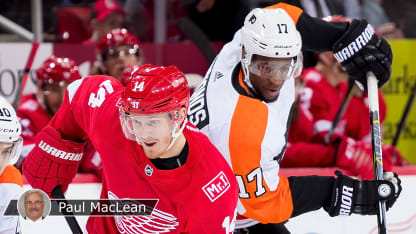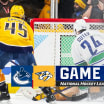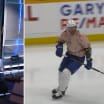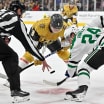The halfway point of the season is a significant benchmark for NHL teams.
After 41 games, teams understand what their strengths and weaknesses are. Now it's time to do something about it.
In the first 20 games, you try to come sprinting out of the gate and pull away from the pack as much as you can. Then you kind of peter yourself out from Games 21 through 41, trying to learn and tweak what your true identity is.
By now, you should know what your team does well. Or, more importantly, what it doesn't.
Most NHL teams reached the midway mark of their schedules in the past week. General managers and coaches have talked daily to this point, but now comes the time where scouts and other player personnel people enter the fray.
Their objective: Fill their teams' needs.
That's what makes these next six weeks so intriguing. It's pretty much the official countdown to the NHL Trade Deadline.
For the next month and a half, teams will be trying to find that perfect fit. If your defensemen are lacking, the focus will turn to potential candidates who might be on the market by the deadline, which is Feb. 25 this year. If offense is an area of need, there are usually a handful of scorers to be had.
But the price for either commodity will be steep. The cost often involves a package of blue-chip prospects and/or high draft picks.
What you'll find between now and the Trade Deadline is that the 31 teams can be divided into three categories:
You'll have the teams at the top of the standings that understand it would take a second-half collapse to keep them from reaching the Stanley Cup Playoffs. These teams consider themselves Cup contenders and are looking for one or two players to put them over the top.
There will be struggling teams that have to come to the sobering decision that the postseason is a fading dream. At some point they'll have to decide that they're sellers and give up established players for future assets.
Then there is the third group, which is made up of teams shoehorned in the middle of the pack. These teams could be buyers or sellers, depending on how the next six weeks go. They'll likely wait until the clock ticks down, often until deadline day, before deciding if they are pretenders or contenders.
On many occasions they want to see which prospects on other teams get hot leading up to the deadline. Everyone is looking for the kid whose development is on the upswing.
Sometimes you don't have to make a trade to improve; a player returning from injury can prove just as important.
Look at the Anaheim Ducks. They got defenseman Cam Fowler back Sunday after he missed 23 games with facial fractures.
One player can be a difference-maker when he comes back. Fowler is one of those guys. It's an adrenaline boost for your entire team. It's like making a trade without giving anything up.
As a coach, this time of the season always brings with it questions relating to the remaining schedule: How long are the road trips? When does it become beneficial to cut down the practice schedule and give players a rest? What are the remaining divisional games, and which are the most important when it comes to jostling for playoff position? How do you adjust your goalie rotation to account for that?
You can rest assured that teams have a game plan in place to answer all of these.
Coaches like to say they take it one game at a time, but there's so much deeper planning when it comes to looking ahead. You want to be playing your best hockey from April to June, not October through December. That's tough to do if your players don't have any gas left in the tank.
The time for looking back has ended. The second half of the season means it's time to look ahead.


















